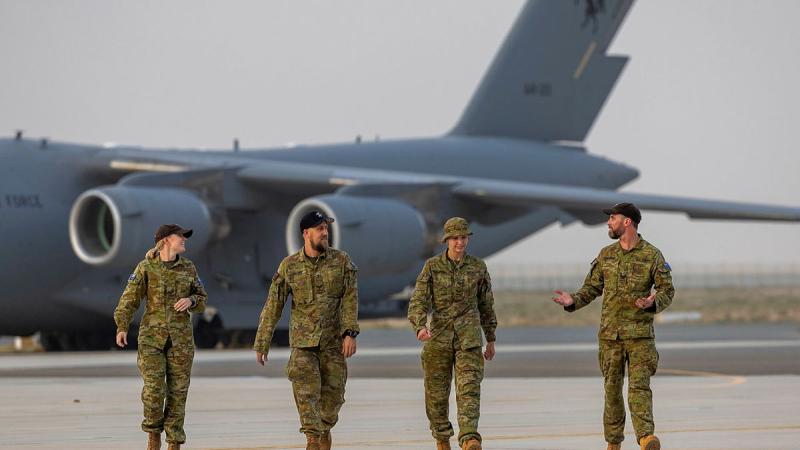Five months of official Medicare billing data shows after a decade of cuts and neglect from the Liberals, the slide in the GP bulk billing rate has stopped and bulk billing has now stabilised, since the Albanese Government tripled the bulk billing incentive.
The GP bulk billing rate was 77.7% in March, a rise of 2.1% since the higher bulk billing incentives came into effect on 1 November.
The increase in the bulk billing rate means Australians had an estimated 950,000 additional trips to the GP bulk billed in the five months to March. The increase in bulk billing is across all states and territories, with GP clinics around the country making the shift back to bulk billing.
| Oct 2023 (before incentive increase) | Nov 2023 | Dec 2023 | Jan 2024 | Feb 2024 | Mar 2024 | % pt change since Oct 2023 | Estimated additional bulk billed GP visits | |
| NSW | 80.6% | 81.2% | 82.3% | 81.2% | 81.4% | 82.2% | 1.6 | 218,000 |
| VIC | 76.8% | 77.4% | 78.3% | 77.8% | 78.1% | 78.5% | 1.7 | 210,000 |
| QLD | 73.6% | 74.5% | 75.8% | 74.5% | 74.9% | 76.1% | 2.5 | 208,000 |
| SA | 70.7% | 73.2% | 74.5% | 73.8% | 73.9% | 74.4% | 3.7 | 141,000 |
| WA | 68.4% | 69.6% | 70.8% | 69.4% | 69.9% | 70.4% | 2.0 | 97,000 |
| TAS | 66.3% | 68.9% | 72.0% | 70.4% | 70.7% | 71.3% | 5.0 | 55,000 |
| NT | 71.5% | 73.0% | 73.6% | 74.0% | 73.6% | 75.5% | 4.0 | 10,000 |
| ACT | 51.5% | 51.4% | 53.4% | 51.6% | 51.5% | 52.7% | 1.3 | 5,500 |
| Australia | 75.6% | 76.5% | 77.7% | 76.6% | 77.0% | 77.7% | 2.1 | 954,000 |
Families with children under 16, pensioners and other concession cardholders are finding it easier to see a bulk billing doctor. Together, these patients make up more than 3 out of 5 visits to a GP.
The GP bulk billing rate measures the proportion of all GP visits under Medicare that involved no patient payment.
Bulk billing had been in freefall after a decade of cuts and neglect to Medicare by the former Government that began when Health Minister Peter Dutton tried to do away with bulk billing altogether by introducing a tax on every single visit to the GP, and starting a six-year freeze on Medicare rebates.
The Albanese Government’s $6.1 billion investment in strengthening Medicare, including the largest investment in bulk billing in Medicare’s 40-year history, has given GPs the confidence to build sustainable businesses, particularly in regional and rural Australia, where Medicare payments for a standard bulk billed GP visit have increased by 50%.
This greater confidence is also increasing the number of junior doctors choosing general practice as their specialty, and particularly in rural and remote communities.
The Albanese Government has agreed to expand the number of rural GP training places in 2024 to meet a welcome surge in demand.
The Australian College of Rural and Remote Medicine (ACRRM) is preparing for up to 165 doctors to take up its 2024 places under the Australian General Practice Training program, 11 more than their target of 154.
In addition, 188 trainees will be offered places on in the Rural Generalist Training Scheme this year-30 more than last year.
The extra training places will see more doctors living, working and training outside our major cities while providing care to people in rural, regional and remote communities.
The Royal Australian College of General Practitioners also saw an increase in demand for training places – with 1,255 new trainees taking up places – 88 more than last year.
Australian GP training is delivered jointly by the two GP Colleges and is fully funded by the Australian Government. At least 50% of all training occurs outside major cities with extra support given to graduates training in rural and remote regions.
Thanks to the Albanese Government, more junior doctors are choosing general practice as a specialty and bulk billing has stabilised and begun to rise again, enabling GPs to bulk bill more patients who need care the most.
Quotes attributable to Minister Butler:
“Doctors’ groups have called our tripling of the bulk billing incentive a ‘game changer’ – and clearly it is.
“After a decade of cuts and neglect from the Liberals, the Albanese Government committed to making it easier for people to see a bulk billing doctor – and the first five months of data shows that is exactly what is happening right around the country, particularly in rural and regional Australia.
“At the same time, general practice incomes have increased. Eligible patients account for around 3 out of 5 visits to the GP, and in some communities much more than that, meaning a very significant increase to general practice incomes.
“For a doctor in a major city, the Medicare payment they get to bulk bill these patients for a standard consult has increased by 34%.
“For a doctor in regional and rural Australia, the Medicare payment has increased by around 50%.
“This is a win all round – for patients, doctors and the health system – and it is helping make Medicare stronger.”








